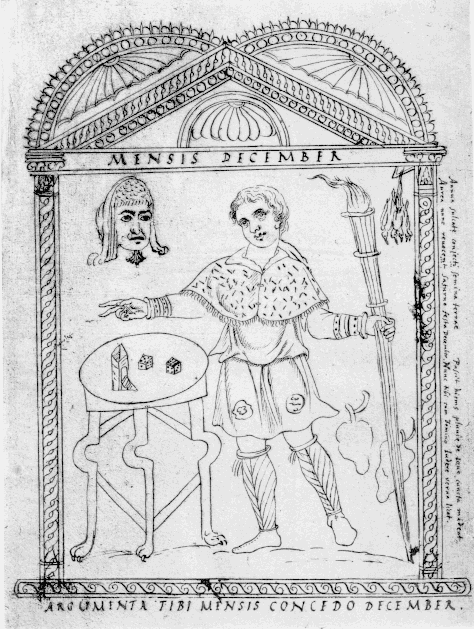Give to others readily, and cherish good hopes. Marcus Aurelius. Meditations. Book 1.
Image: Month of December from the Chronography of 354 with Saturnalian dice on the table and a mask (oscilla) hanging above by the 4th century CE calligrapher Filocalus.
Although Saturnalia is usually remembered for festivities, gift giving, and, in the ancient Roman world, role reversal between slaves and their masters, there was a less benevolent aspect of the chthonic god, Saturn that connected him to the underworld and its ruler Dis Pater also known as Pluto. Ten days of gladiatorial events were presented by quaestors throughout December and early Christian critics of the 3rd century CE, in their anti-pagan campaigns, claimed the primeval Saturn had at one point before the establishment of the Republic, demanded sacrificial male victims (virorum victimis). It was said, though, that when Hercules visited Italy, the civilizing demigod insisted that the practice be halted and the ritual reinterpreted. Instead of heads to Dis Pater, the Romans were to offer effigies or masks (oscilla). Figurines (sigillaria) exchanged as gifts were also thought to represent token substitutes.

No comments:
Post a Comment